An installation by artist Richard Turner imagines the night sky, 18th century style
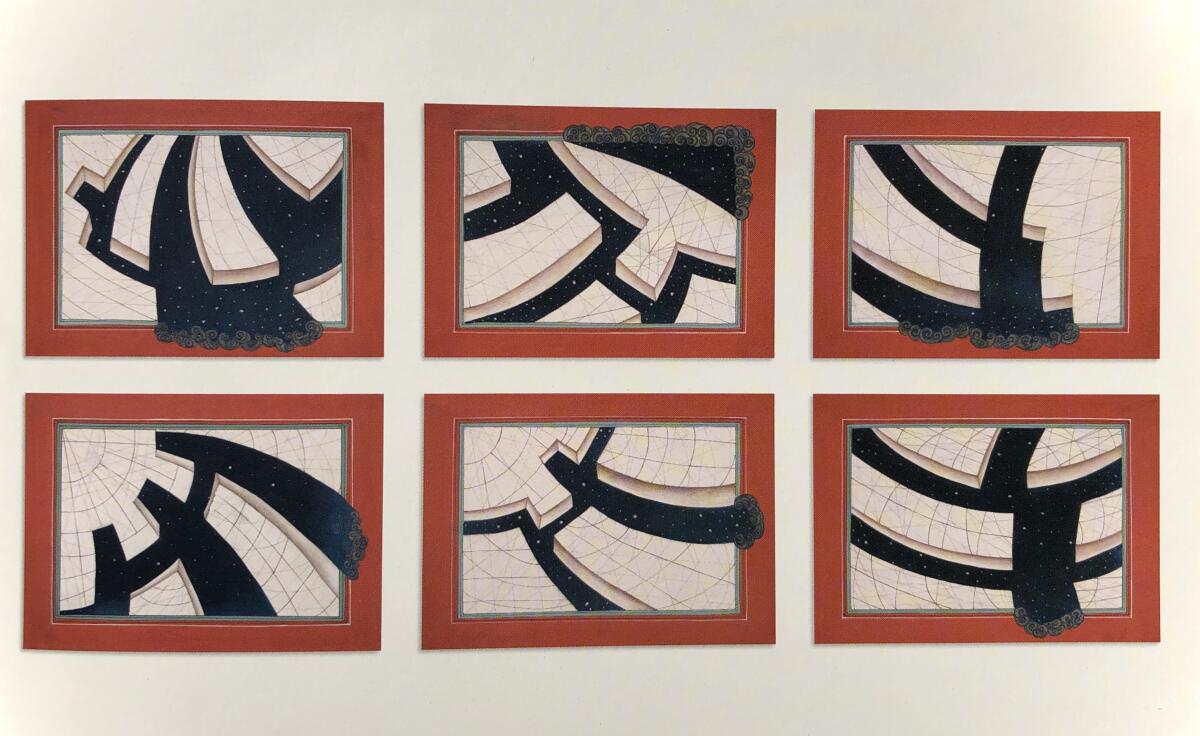
- Share via
Who me? Just enjoying Twitter’s final days before it turns into 4chan. I’m Carolina A. Miranda, art and design columnist at the Los Angeles Times, with the week’s essential arts news:
In search of shifting time
At a time of breakneck change, an exhibition at Chapman University’s Guggenheim Gallery embraces the notion of perpetual movement. “No Ideas but in Things,” the retrospective of artist Richard Turner — the title is taken from a poem by William Carlos Williams — is less a final statement on a life and career than it is a series of constantly shifting perspectives.
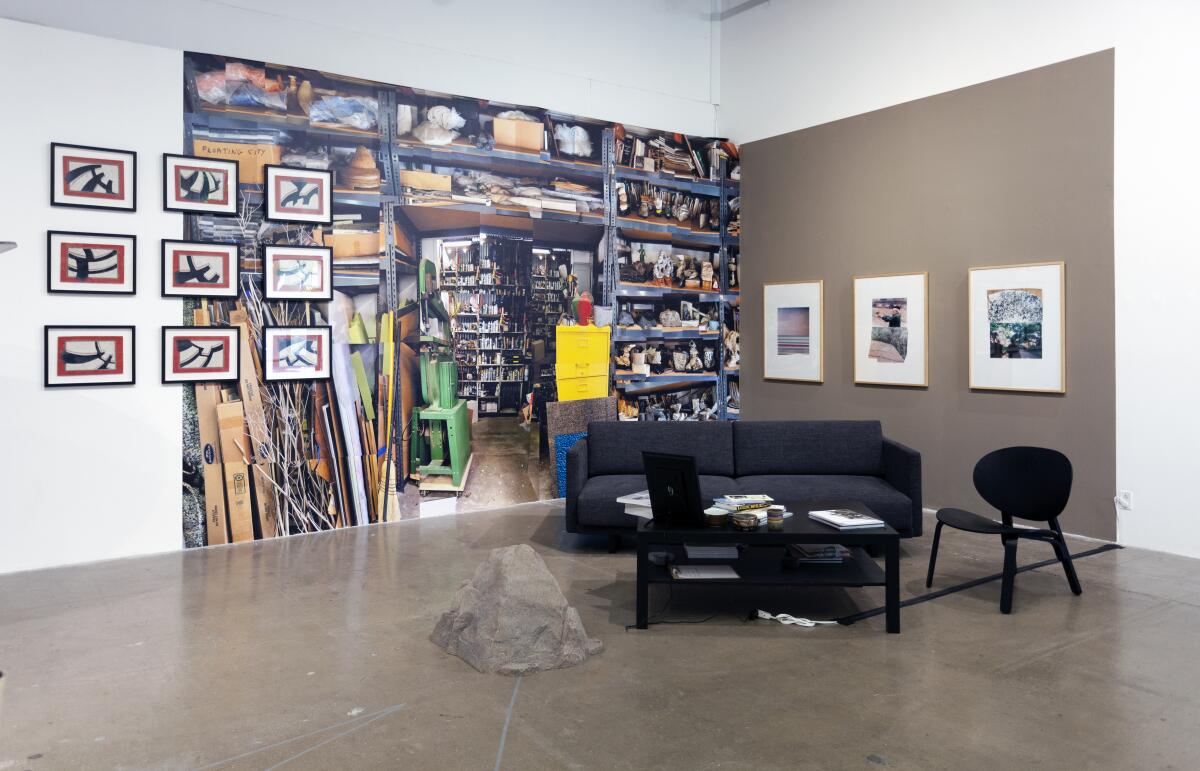
Turner is a conceptual artist who has long been inspired by the ways in which the meanings of objects can change based on the ways in which they are presented — something he draws from an interest in ikebana flower arranging and the display of viewing stones. These artistic forms typical of East Asia take objects from the natural world and present them in ways that heighten their contemplativeness or aesthetic appeal.
His retrospective, therefore, consists entirely of groupings of objects amassed over a decades-long career as an artist and teacher (he is a professor emeritus at Chapman). This includes art: paintings, works on paper, sculpture, fragments of old installations, as well as conceptual pieces (such as the movie poster for an invented film titled “Blue Murder” he once commissioned from the workshop of billboard artist P.N. Sharma in Jaipur, India, in the ’90s). Included in the mix are the quotidian objects you might find in any studio — say, a table, a sofa, an easy chair.
The vibe is less retrospective than heady studio visit.
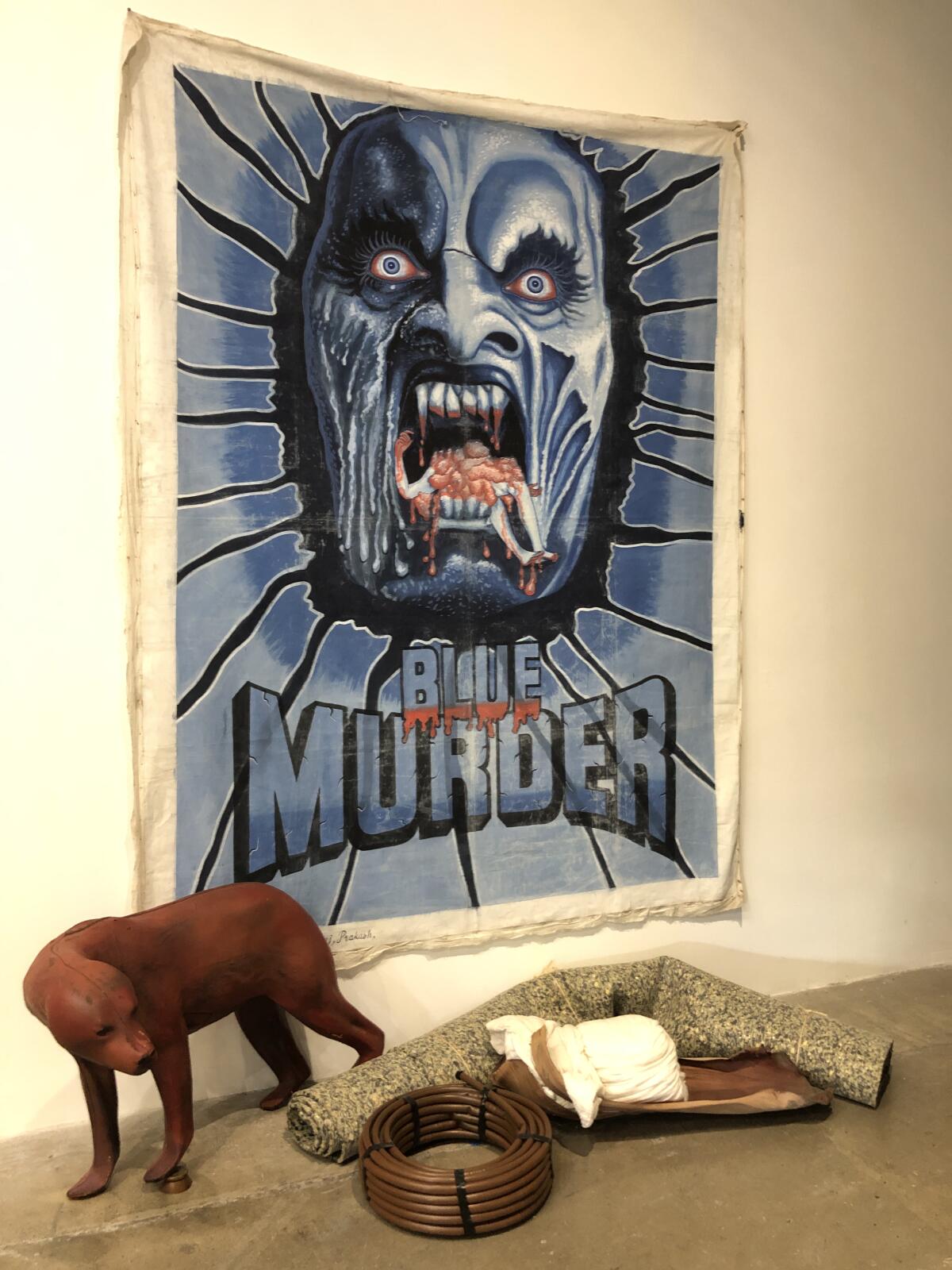
Over the course of the exhibition, these objects continuously shift. A roll of the dice indicates where a plastic rock on the floor of the gallery is to be placed; another toss might shift the objects presented in a viewing stone display. Gallery assistants are invited to continuously replace wall works — paintings, a scroll, hand-painted signs — with a cache of art stored in the gallery. These might be presented upside down. It’s up to them.
In a related catalog, “(Based on a True Story),” Turner describes this approach as part of a shift in his practice toward “becoming an artist who no longer made objects.” It was a process that started in his studio, when he began making arrangements and photographing them with his phone. These might include a rock, a bucket, a sculpture, a plastic net that may have once held within it oranges or lemons.
Make the most of L.A.
Get our guide to events and happenings in the SoCal arts scene. In your inbox every Monday and Friday morning.
You may occasionally receive promotional content from the Los Angeles Times.
On the Sunday afternoon that I visited the show, works were installed and reinstalled as I made my way through the gallery, which meant I ended up circling the space several times since the installation kept evolving and new objects kept emerging as others were put away. Did I see one show or two? It’s hard to say.
All I know is that I happened to stumble into the place at a fortuitous moment. On the wall was a series of painted miniatures inspired by the Jantar Mantar, an 18th century astronomical observatory in Jaipur (a city where Turner lived for a year in the late 1960s while on a Fulbright). The miniatures were drawn from sketches he made at the site during his most recent visit to the area in 2004. He then tapped painter Harish Chandra Sain, a professional copyist of Rajput miniatures, to transform them into a series of paintings executed in the miniature style.
Together Turner and Sain determined the ways in which the sketches would be interpreted, with Sain adding his own flourishes — such as the delicate burst of clouds that border the night sky in the images.
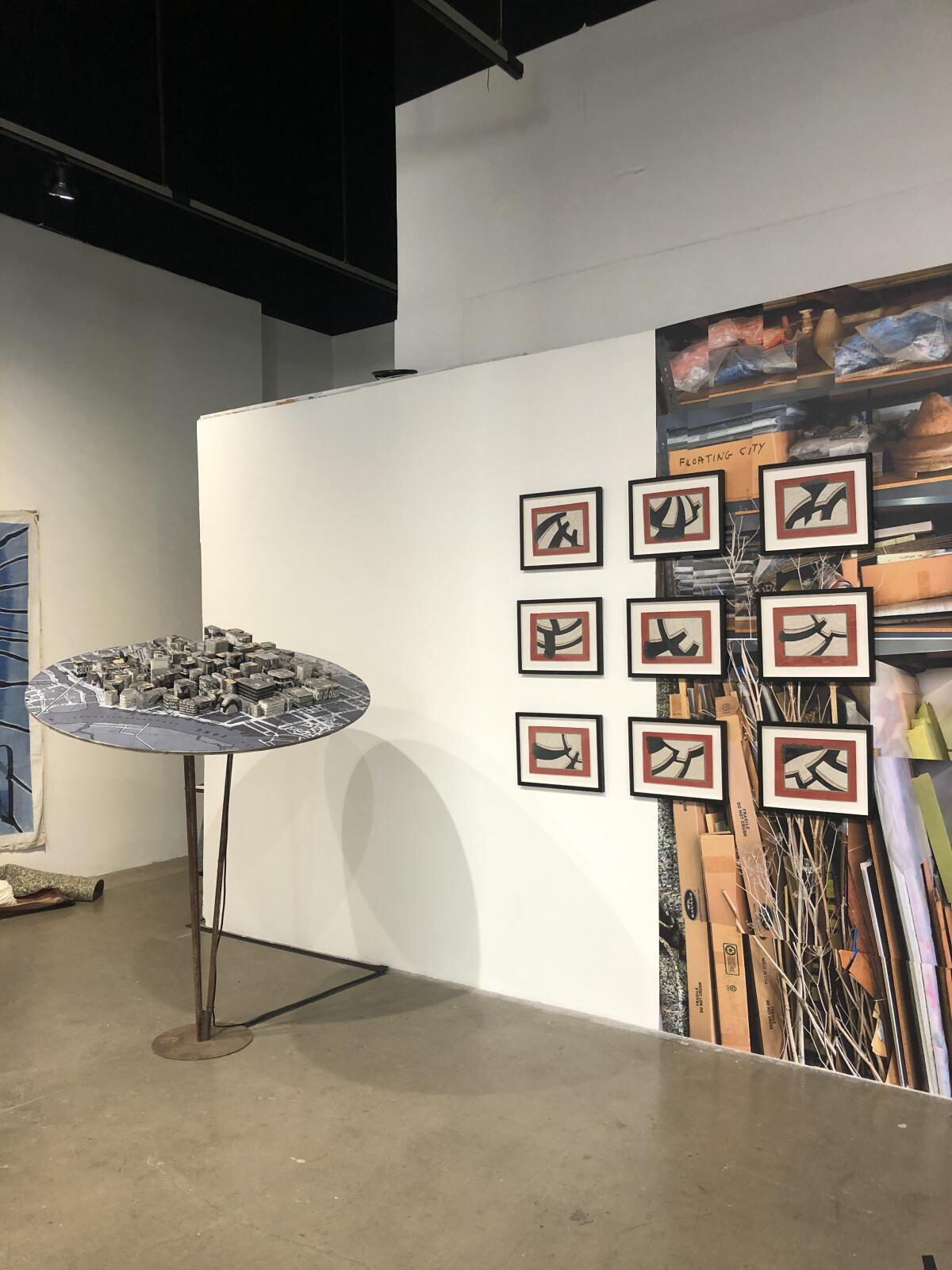
The series is absolutely wondrous — the sky as it might have been seen and studied through the elaborate concrete forms of an observatory built three centuries ago. The same sky we see now. The one that is always moving.
Richard Turner’s “No Ideas but in Things” is on view at the Guggenheim Gallery at Chapman University through Nov. 19.
In and out of galleries
Not one but two Pablo Picasso exhibitions are in L.A. right now. A bit much for an artist so familiar that his name is a routine TikTok punchline? Not if the framing is right, reports Times art critic Christopher Knight. “The exhibitions at Pasadena’s Norton Simon Museum and the UCLA Hammer Museum in Westwood are both firsts, which is fairly remarkable for an artist so abundantly studied.”
Great dinner party trick: Ask Siri or Alexa to tell you Pablo Picasso’s full name.
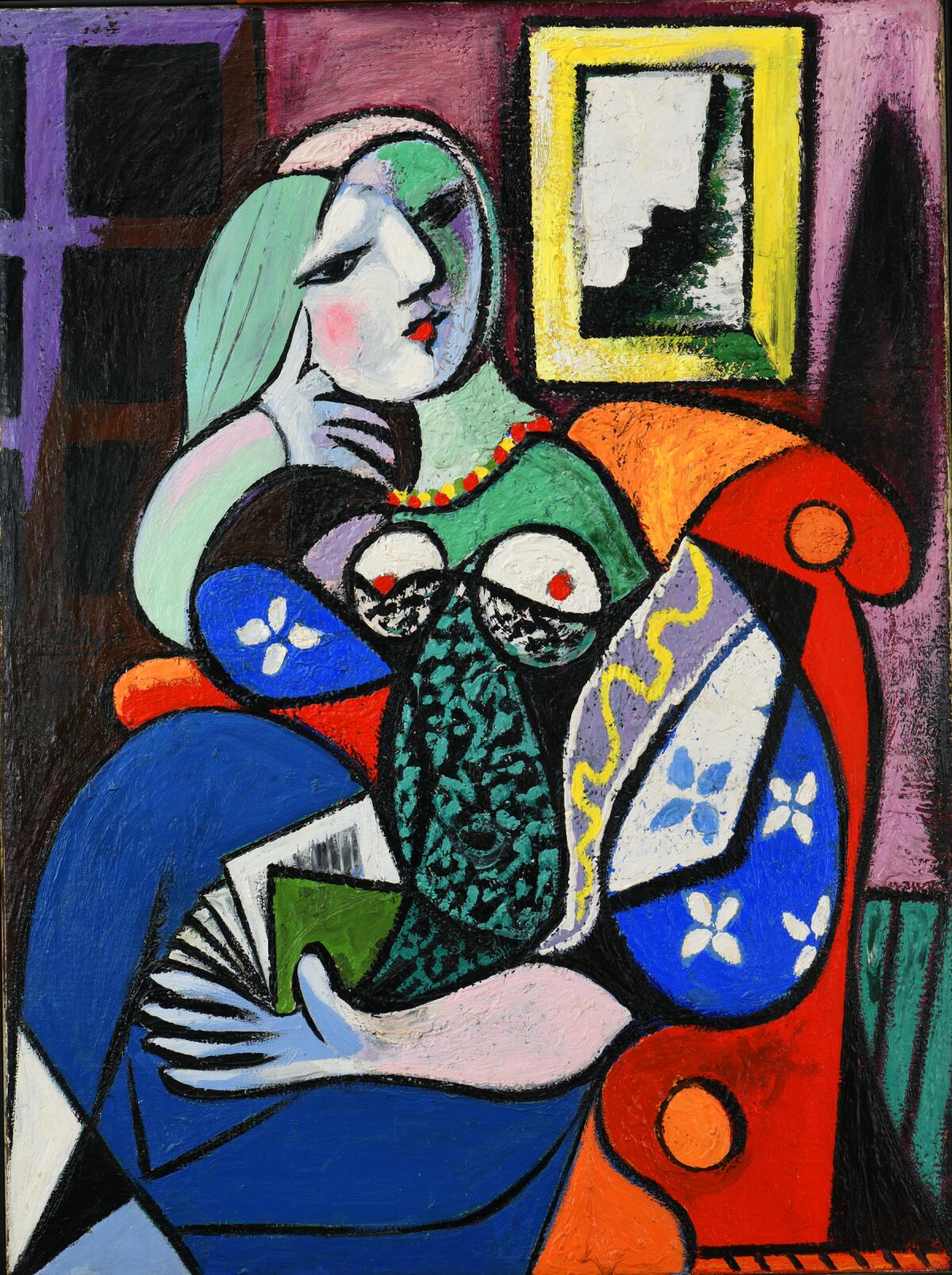
The latest art target of climate activists armed with glue and liquid was Johannes Vermeer’s “Girl With a Pearl Earring” at a museum in the Hague.
Kelsey Ables of the Washington Post has an interesting story about why such museum actions are nothing new. Says activist Beka Economopoulos: “It’s not attacking the sunflower painting as much as it is attacking something that can symbolize the deep violence of an economic system that creates extreme wealth and extreme poverty.”
Enjoying this newsletter? Consider subscribing to the Los Angeles Times
Your support helps us deliver the news that matters most. Become a subscriber.
Closer to home: Last year, I wrote about how SFMOMA was cutting away at its more interesting programs — among them, the free online arts publication Open Space. Now, the site’s editor, Claudia La Rocco, is back with a new publishing project with Bay Area arts and artists at its heart: It’s called the Back Room and you can find it right here.
On the stage
Actor Richard Thomas is taking over the role of Atticus Finch in the touring production of Aaron Sorkin’s “To Kill a Mockingbird,” which is about to kick off a spate of engagements at the Pantages in Hollywood and at Segerstrom in Costa Mesa. Times contributor Jordan Riefe spoke with Thomas about the ways in which the play differs from Harper Lee’s novel. “This adaptation,” he says, “gives Atticus a story which interrogates all of those unassailable virtues.”
Times theater critic Charles McNulty reviews the show — one that lands at a very different time from its initial premiere on Broadway in 2018. “The balance between idealism and realism,” he writes, “is reset in a way that makes it impossible to screen out the depravity of old and enduring hatreds.”
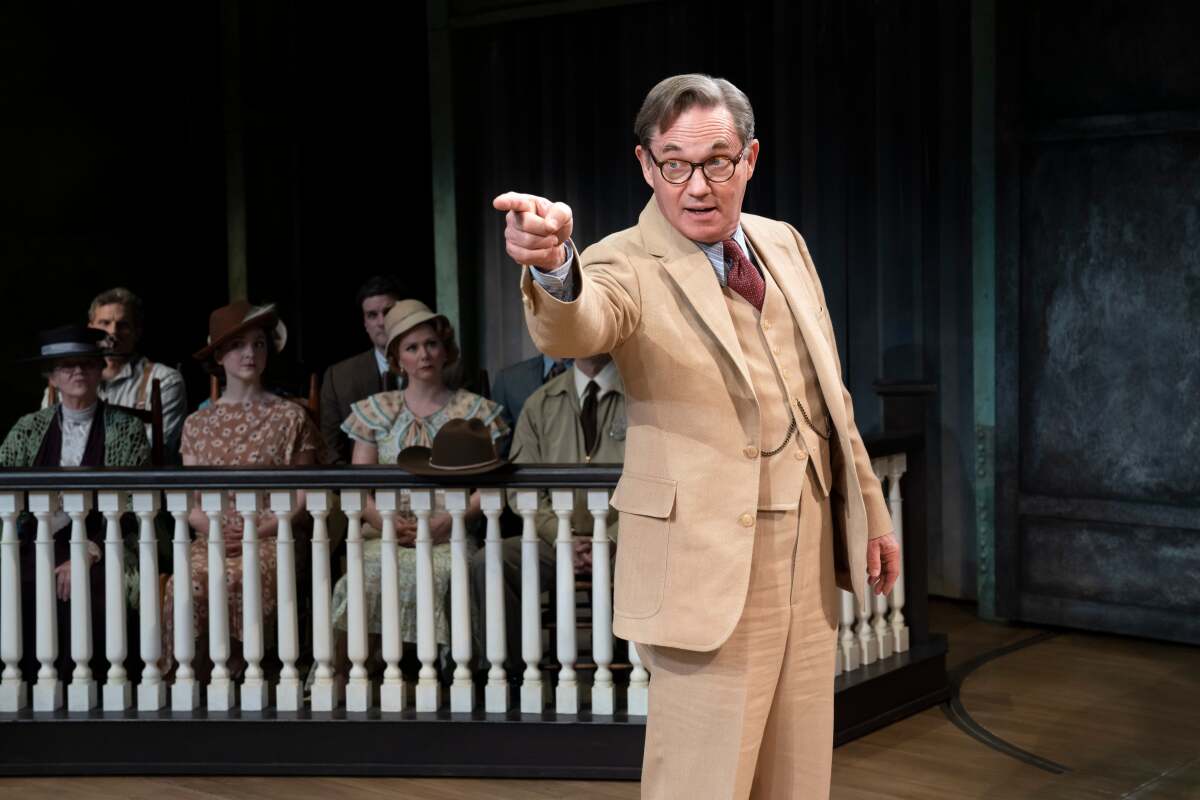
McNulty also reviews L.A. Opera’s “Omar,” by composers Rhiannon Giddens and Michael Abels. The title role of Omar Ibn Said, a Muslim scholar who was kidnapped from what is today known as Senegal and then sold into slavery in the Carolinas, is inhabited by tenor Jamez McCorkle. “Even when the libretto feels skeletal, McCorkle supplies an emotional heft,” writes McNulty. “The meditative sincerity of the performance left me with my head bowed.”
I was bowled over by the scenic and costume design — imagined by a team that included Christopher Myers, Amy Rubin, April M. Hickman and Micheline Russell-Brown. I may have also bawled during the second act.

Just dance
Choreographer Micaela Taylor’s “Love.Lost.Fly.” — inspired by elements of Puccini’s “Madama Butterfly” — premiered at the Wallis in Beverly Hills (alongside pieces by Matthew Neenan and Baye & Asa). The piece is a collaboration with the L.A. dance troupe Bodytraffic. Taylor says she was drawn to Puccini’s tale because it is a story of “cultural difference,” she tells Steven Vargas, of “two different people from different worlds” who come together.
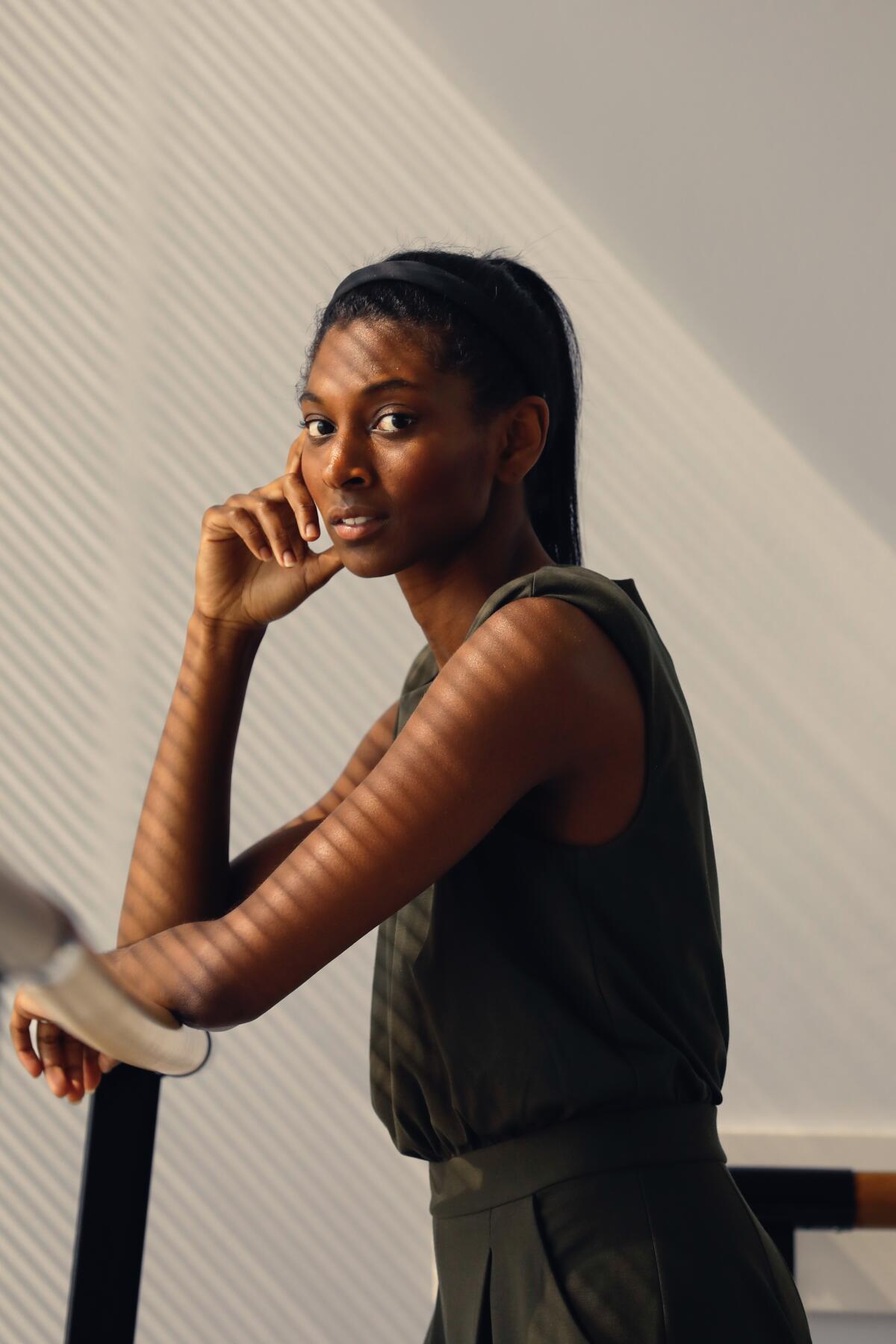
Essential happenings
Matt Cooper has got the weekend list! And it includes the Día de los Muertos ofrendas at Grand Park and a screening of “The Cabinet of Dr. Caligari” at Walt Disney Concert Hall — to be accompanied by Hurricane Mama!
Plus, on Saturday, Hauser & Wirth is kicking off a festival of performance featuring happenings by the likes of Martin Creed, Wu Tsang, Jeremy O. Harris, EJ Hill, Autumn Breon, San Cha and many, many more.

Where I’ll be this weekend: catching the final days of the Nike Cortez show at La Pau Gallery.
Moves
LAXART has just received a $1-million donation for its new building in East Hollywood from philanthropists Jarl and Pamela Mohn — which means that its $5-million building campaign is now 65% complete, reports The Times’ Deborah Vankin.
Passages
Mike Davis, author of the groundbreaking social and urban history “City of Quartz,” a writer whose work exposed L.A.’s social fractures and riled its most ardent boosters, has died at 76. For his obituary, I write about how this “irrationally ambitious” book made L.A. see itself anew and turned Davis into a public intellectual.
D.J. Waldie puts Davis in a pantheon of California interpreters that includes Joan Didion and historian Kevin Starr. And he looks at the ways in which Davis opened a path for others: “His books and his scholarship cleared a space where divergent stories — from the streets and in neighborhoods — could be told by other voices.”
And Davis collaborator Jon Wiener writes about what made Davis special: his willingness to depart from convention.

Libor Pešek, a Czech conductor best known for leading the Royal Liverpool Philharmonic has died at 89.
Ukrainian conductor Yuriy Kerpatenko was shot this month in his home in Kherson after refusing to take part in a concert in the Russian-occupied city. The Economist’s “The Intelligence” podcast has a really good segment on Kerpatenko’s life and career.
For the record:
5:38 p.m. Nov. 7, 2022An earlier version of this article stated that the Economist’s podcast is named “Intelligent Life.” It is called “The Intelligence.”
The L.A. art scene, leaked gossip and that time Christopher Knight and Peter Schjeldahl tried to quit smoking together: It’s all in Knight’s appreciation for the New Yorker’s longtime art critic, who died last week.
In other news
— Berlin’s Hamburger Bahnhof Museum has switched off a Dan Flavin fluorescent tube installation for the first time since 1996 because of the energy crisis. (Honestly, I’m slightly appalled it isn’t already turned off regularly.)
— The United Nations has stepped up satellite monitoring of damage to Ukrainian cultural sites as a result of the Russian invasion.
— Why the Russians stole Potemkin’s bones.
— “The salient fact about Neom is that it is clearly an instrument of both soft and hard power wielded by an exceptionally murderous and repressive regime.” The Guardian’s Rowan Moore looks at the human toll behind Mohammed bin Salman’s imagined city in the Saudi desert.
— Greg Allen has been hanging out at the U.S. Supreme Court to listen to arguments related to the Andy Warhol fair use case for ARTnews and caught the justices bantering about Prince.
— “Their temporary architecture epitomises French anthropologist Marc Augé’s concept of ‘non-places’ — the transient, sterile, identikit spaces of supermodernity.” Critic Martin Herbert hits the art fairs and, as someone who despises art fairs, I am here for it.
And last but not least ...
Just in time for Halloween, a paean to Trashy Lingerie, the L.A. shop that helped establish the “sexy” Halloween look.
The biggest entertainment stories
Get our big stories about Hollywood, film, television, music, arts, culture and more right in your inbox as soon as they publish.
You may occasionally receive promotional content from the Los Angeles Times.




